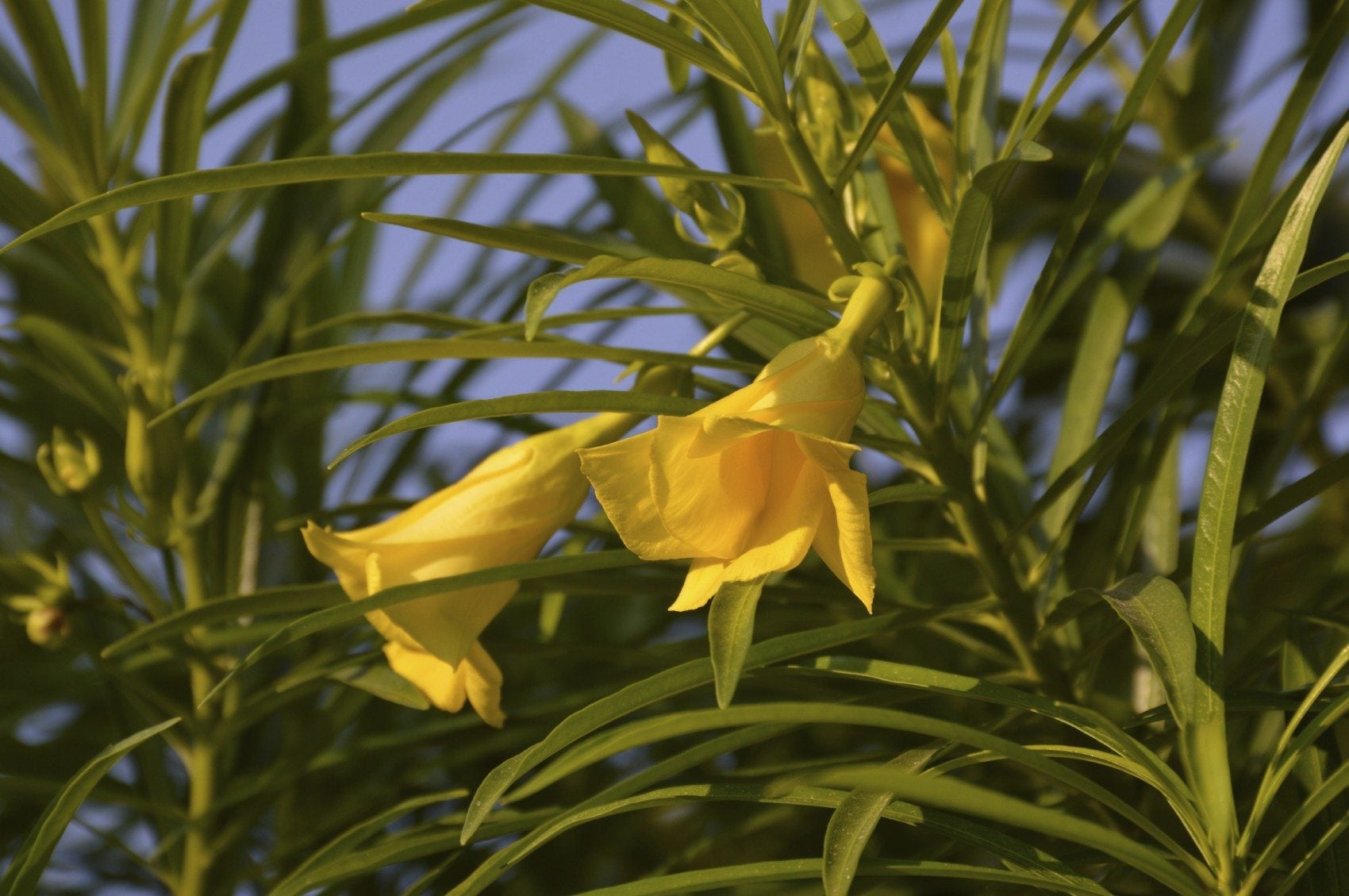Yellow Oleander Care: Uses For Yellow Oleander In The Landscape


Yellow oleander trees (Thevetia peruviana) sound as if they should be closely related to oleander, (genus Nerium) but they aren’t. Both are members of the Dogbane family, but they reside in different genera and are very different plants. Read on for yellow oleander information and tips on yellow oleander care.
Yellow Oleander Information
Yellow oleander trees are so small that many consider them large bushes. Yellow oleander information suggests that these evergreen plants rarely get over 10 feet (3 m.) when cultivated, although they can get to 20 feet (6 m.) in the wild.
The flower of yellow oleander looks like a narrow tube that flares out at the tip into five petals, twisted into a spiral shape. They are fragrant, about 2 inches (5 cm.) long, and grow in clusters. A mechanism inside the throat of the flowers helps with pollination. It coats insects coming for the sweet nectar with pollen, making sure that they will transfer pollen to the next flower.
Yellow oleander trees’ thick fruit has four sides and changes colors as it matures. The fruit starts out green, then turns a lipstick red, but finally matures into a dull black. The stone inside is brown and smooth and makes nice necklaces.
Uses for Yellow Oleander
Yellow oleander trees grow in savannahs and riparian areas in their native range in Africa. They can become invasive if grown in open regions, and the trees have been listed as noxious weeds in South Africa.
In other countries, the uses for yellow oleander are largely ornamental. In the United States, the tree is cultivated as a garden plant, despite its toxicity. Is yellow oleander poisonous? Yes, it is. Every part of the plant is poisonous.
Yellow Oleander Care
Many gardeners choose to grow yellow oleander in spite of its toxicity, seduced by the plant’s luxurious, tropical look and long-lasting blossoms. If you want to grow this plant, it’s nice to know that yellow oleander care is not difficult or time consuming. Just be cautious about growing it around small children and pets.
Sign up for the Gardening Know How newsletter today and receive a free copy of our e-book "How to Grow Delicious Tomatoes".
Plant yellow oleander trees in part or full sun, since they like heat. The trees do best in well-draining soil with lots of organic content, so work in compost before you plant.
You’ll need to water these plants regularly. Pruning and litter cleanup (wear gloves) will take a little of your time as well. Generally, however, these are low-maintenance plants.

Teo Spengler is a master gardener and a docent at the San Francisco Botanical Garden, where she hosts public tours. She has studied horticulture and written about nature, trees, plants, and gardening for more than two decades, following a career as an attorney and legal writer. Her extended family includes some 30 houseplants and hundreds of outdoor plants, including 250 trees, which are her main passion. Spengler currently splits her life between San Francisco and the French Basque Country, though she was raised in Alaska, giving her experience of gardening in a range of climates.